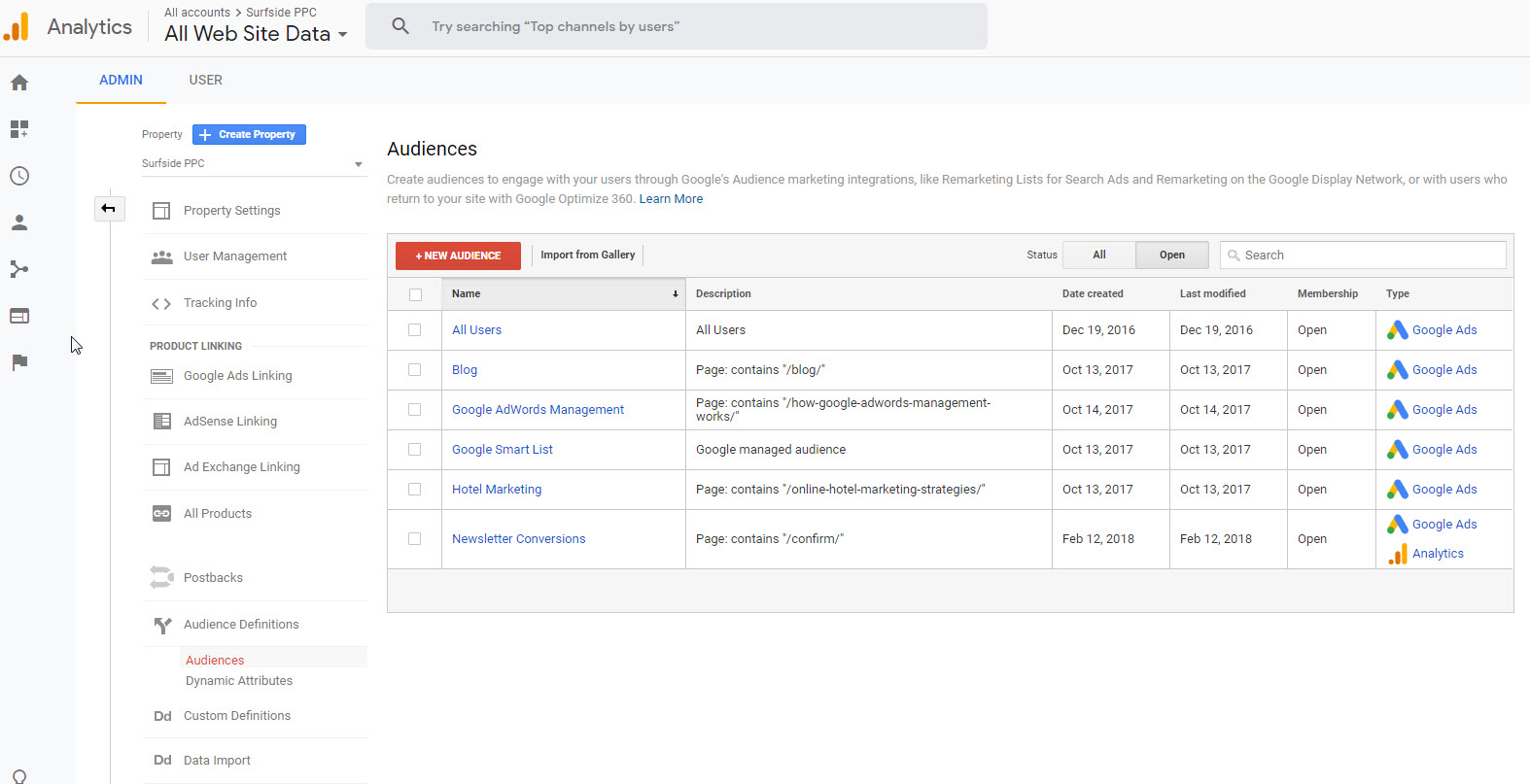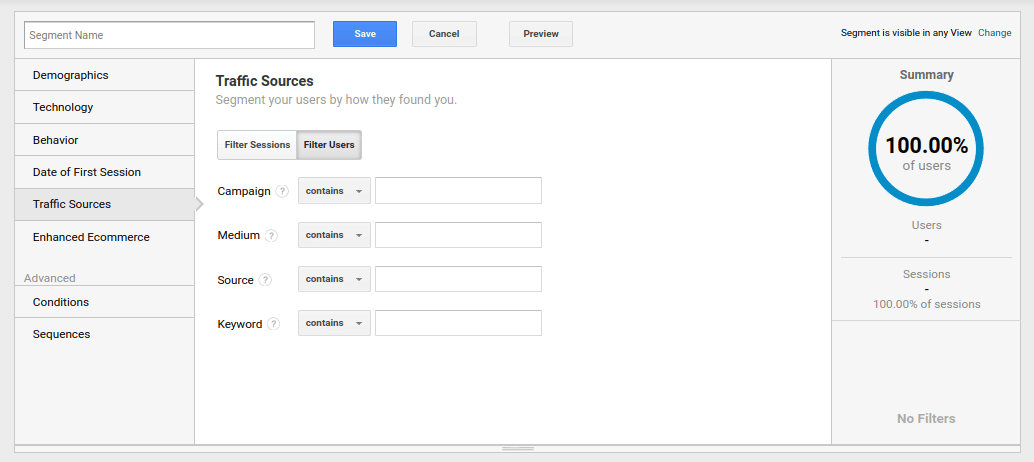Maximizing Your ROI with Remarketing In Google Analytics
Wiki Article
Efficient Strategies for Remarketing in Google Analytics
Through strategic target market division, tailored remarketing lists, and engaging advertisement creatives, services can craft tailored campaigns that reverberate with their target audience. By checking out the subtleties of vibrant remarketing and leveraging advanced tracking tools, organizations can unlock the complete potential of their remarketing initiatives, leading to increased brand visibility and customer involvement.Target Market Division
Making use of target market segmentation is a critical strategy in optimizing the effectiveness of remarketing projects within Google Analytics. By dividing your audience into distinctive groups based upon their habits, demographics, or interests, you can customize your advertising and marketing messages to be more engaging and pertinent. This method enables you to deliver tailored advertisements to certain sectors, boosting the chance of conversion.
Moreover, audience division aids you understand the varying requirements and preferences of various customer teams, allowing you to craft even more compelling ad creatives and deals. This targeted method not just boosts the performance of your remarketing efforts however additionally enhances total project efficiency.
Setting Up Remarketing Listings
To efficiently implement remarketing approaches in Google Analytics, the first action includes creating targeted remarketing lists based upon particular target market interactions. Establishing remarketing lists enables marketing professionals to sector their internet site visitors right into various classifications based upon their habits, such as pages viewed, items searched for, or activities taken on the website. By defining these sectors, marketing professionals can then produce tailored and appropriate ads that target these details groups, raising the chance of conversion.Remarketing lists can be established utilizing different requirements such as web page check outs, period of visit, particular objective conclusions, and even certain events activated on the web site. This level of customization allows online marketers to customize their advertisements to match the passions and choices of each fractional audience, resulting in higher interaction and conversion prices.
In addition, remarketing lists can also be created based on information imported from various other resources like CRM systems, allowing for a lot more accurate targeting. By establishing these targeted remarketing checklists, marketers can effectively reach out to prospective consumers who have actually already shown interest in their services or products, making best use of the influence of their remarketing projects.
Producing Engaging Advertisement Creatives
After segmenting internet site visitors right into targeted remarketing checklists based upon details audience communications, the following essential action is to craft compelling advertisement creatives that resonate with each fractional team's passions and preferences. The performance of remarketing projects greatly relies upon the ability of these advertisement creatives to capture the attention of the target market and drive them to take the desired activity.To create engaging advertisement creatives, it is vital to recognize the one-of-a-kind features of each fractional team (What Is “Remarketing” In Google Analytics?). Tailoring the messaging, visuals, and uses to line up with the rate of interests and preferences of the target market can significantly raise the possibilities of conversion. Using vibrant ads that instantly readjust web content based upon the individual's actions can likewise enhance the customization of the ad experience

Monitoring Efficiency and Optimization
Effective monitoring of project performance and constant optimization are essential aspects of successful remarketing approaches in Google Analytics. To ensure the effectiveness of review remarketing projects, marketers should regularly track vital performance metrics such as click-through rates, conversion rates, and return on advertisement spend. By monitoring these metrics, marketing experts can gain useful insights into the efficiency of their projects and identify areas for improvement.In Google Analytics, marketing experts can take advantage of tools like conversion tracking and target market division to evaluate the performance of their remarketing campaigns. Conversion tracking allows marketing professionals to track certain actions that individuals take after clicking on a remarketing ad, giving important data on the effectiveness of the project in driving wanted end results. Audience division, on the other hand, enables marketers to split their audience right into various sections based upon various requirements such as demographics, habits, and interests, enabling even more targeted and individualized remarketing initiatives.
Constant optimization is crucial for making the most of the effect of remarketing projects. Online marketers must use A/B screening to try out different advertisement creatives, messaging, and targeting strategies to recognize one of the most efficient methods. By frequently evaluating project performance information and making data-driven optimizations, marketing professionals can make certain that their remarketing projects are attaining the wanted results and driving conversions successfully.
Leveraging Dynamic Remarketing
Using vibrant remarketing can considerably boost the significance and influence of targeted ads in Google Analytics. This sophisticated technique permits advertisers to reveal customized advertisements to individuals who have actually formerly visited their web site or used their mobile app. By dynamically showing products or solutions that the users have revealed rate of interest in, vibrant remarketing helps to maintain the brand name fresh in their minds and encourages them to return to finish a purchase.
Furthermore, dynamic remarketing projects can be go automated and maximized in real-time based upon performance information, guaranteeing that the ads stay effective and pertinent. By leveraging dynamic remarketing in Google Analytics, marketers can develop more impactful and targeted marketing campaign that reverberate with their target market and drive results.
Conclusion
In final thought, efficient remarketing techniques in Google Analytics involve target market division, targeted remarketing lists, engaging ad creatives, performance monitoring, and dynamic remarketing. By focusing on tailored ads, data analysis, and continual optimization, services can boost conversion rates and drive engagement efficiently. Leveraging devices like conversion monitoring ensures that advertisements stay tailored and relevant, resulting in general success in remarketing efforts.Via tactical audience segmentation, tailored remarketing lists, and engaging advertisement creatives, organizations can craft individualized projects that resonate with their target audience. Making use of dynamic advertisements that instantly change web content based on the user's behavior can likewise enhance the personalization of the ad experience.
Conversion tracking enables marketing professionals to track particular actions that individuals take after clicking on a remarketing advertisement, supplying valuable information on the effectiveness of the campaign in driving wanted end results.Using dynamic remarketing can significantly boost the significance and effect of targeted ads in Google Analytics - What Is “Remarketing” In Read More Here Google Analytics?.In final thought, reliable remarketing methods in Google Analytics include audience segmentation, targeted remarketing listings, engaging advertisement creatives, performance tracking, and dynamic remarketing
Report this wiki page